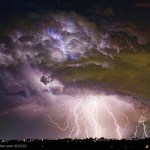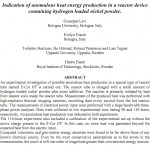Cold Fusion
Cold Fusion was first reported in 1989. The original experiment was supposed to have produced extra heat that could not be explained wiht chemistry or electronics, so naturally, fusion was considered. Contrary to popular belief, that original experiment has been replicated successfully. The problem isn't that the first experiment produced actual extra heat and no one doing the same experiment could match that result. Rather, none of the attempts at using this experimental set up worked, including the first one. So, yes, the experiment was successfully replicated, and in all cases,…
"Science literacy is a vaccine against the charlatans of the world that would exploit your ignorance." -Neil deGrasse Tyson
Well, I guess it's that season again. The charlatan who claims to have invented a cold fusion device -- the same device whose flaws were exposed here two years ago -- has just held an "independent test" of his device, and there's now a physics paper out claiming that this device works, and must be powered by some type of nuclear reaction!
Image credit: G. Levi et al.; get the whole paper here: http://arxiv.org/pdf/1305.3913v2.pdf.
Well.
Look, let's get a few things…
The Astrophysicist, when he has time, will have something to say about his reading of the physics of the material Tom Whipple sums up.
This situation however seems to be changing following a lengthy interview with a fellow out in Berkeley, California by the name of Robert Godes of Brillouin Energy. He has been working in this field for the last ten years and says that he not only has a reliable heat-producing device, but also understands the physics behind it - which he calls the Quantum Fusion Hypothesis. He says that this theory of just how low-energy nuclear reactions work has allowed…
Renewable energy sources could allow for a prudent decrease in CO2 emissions while still powering a populous, electrified global economy. On The Pump Handle, Mark Pendergrast examines the proverbial canary in the coal mine, Japan. Wary of imported fossil fuels and burned by nuclear disaster, Japan is looking toward solar, geothermal, wind, water, and biomass-powered alternative energy sources. Wind, for example, could provide 10% of Japan's energy needs, but with blade-busting typhoons and fierce winter lightning storms, turbines must be more robust and adaptable than ever. Mark writes, "…

